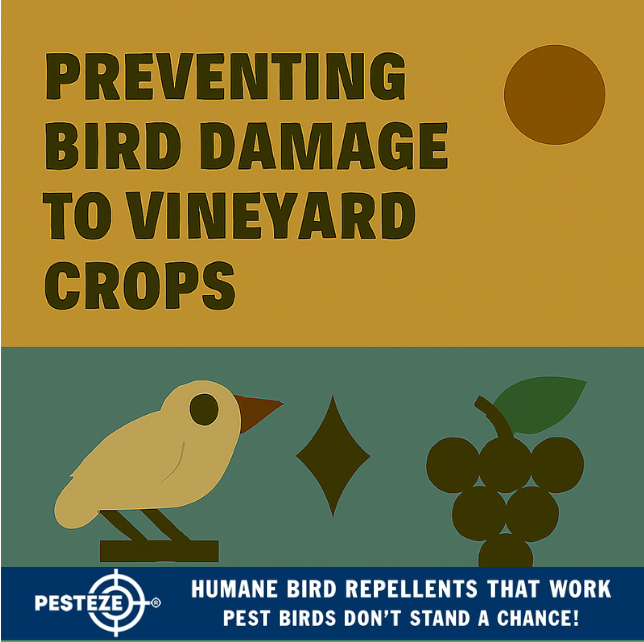PREVENTING BIRD DAMAGE TO VINEYARD CROPS

PREVENTING BIRD DAMAGE TO VINEYARD CROPS
SUMMARY
Bird populations in vineyards create significant challenges for wine production, crop quality, and agricultural productivity in 2025.
FEATURES
- Crop Protection: Comprehensive strategies to prevent bird-related damage to grape crops.
- Wine Production: Methods to maintain optimal fruit quality and vineyard productivity.
- Ecological Balance: Techniques that protect crops while respecting wildlife conservation.
- Technological Innovation: Advanced solutions for managing bird populations in viticultural environments.
- Economic Preservation: Strategies to minimize crop loss and potential revenue reduction.
GUIDE DESCRIPTION
Vineyards represent highly attractive environments for bird populations, offering abundant food sources, potential nesting locations, and extensive agricultural landscapes. The combination of ripening grapes, open spaces, and seasonal food availability creates ideal conditions for persistent bird challenges.
Birds are naturally drawn to vineyard environments through multiple environmental factors. Abundant fruit sources, potential feeding opportunities, and extensive agricultural landscapes make these spaces highly appealing to various bird species. Understanding these attraction mechanisms becomes crucial for developing effective prevention strategies.
Technological innovations in 2025 provide sophisticated solutions for managing bird populations in agricultural environments. Advanced sensor systems, intelligent deterrent technologies, and targeted environmental modifications offer comprehensive protection strategies that balance wine production with wildlife management.
Professional viticultural management requires a holistic approach to bird control that addresses multiple environmental factors. Understanding local bird species, their behavioral patterns, and specific vineyard characteristics becomes essential for developing effective intervention strategies.
Strategic vineyard protection involves multiple comprehensive approaches. Physical barriers, intelligent design modifications, ongoing maintenance protocols, and targeted deterrence techniques create systems that effectively discourage bird populations while maintaining the productive capacity of grape-growing landscapes.
- Pukhraj Sharma


Comments 0